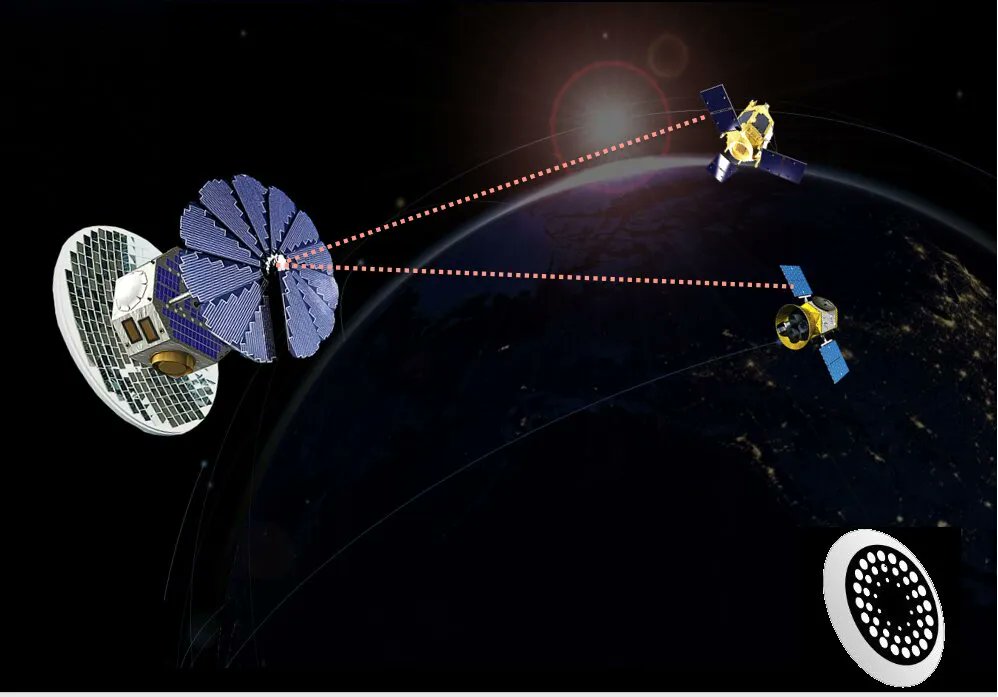Power beaming is one of those technologies that can completely change the world. Almost unlimited power wherever it is needed, whenever it’s needed, is literally a technology straight out of science fiction. Researchers have been working on the technology for decades at this point, but there has been little commercial headway so far, so what is holding this revolutionary technology up? A “killer app” would certainly help move it along – and that is what a team from Space Power, a private company, and the University of Surrey think they have found in the form of powering other microsatellites.
Continue reading “Finally, a Practical use for Space-Based Power Beaming. Sending Power to Satellites in Shade”Launching Rockets from Balloons is About to be a Thing, But We Need a Better Name than “Rockoons”
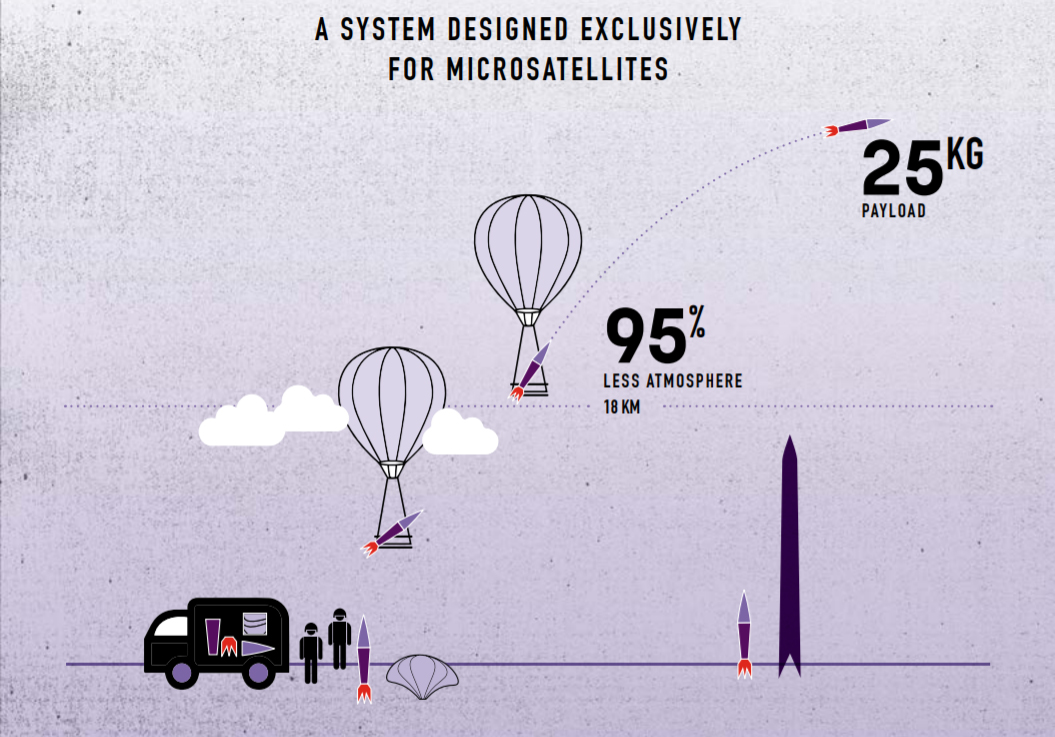
One of the technological hurdles of our age is to get people and equipment into space more cheaply. SpaceX gets a lot of the headlines around that, with their reusable rockets. And so does Blue Origin, to some degree. Now a small start-up affiliated with Purdue University is tackling the problem and making some headway.
The company is called Leo Aerospace LLC and they’re using balloons to lower the cost of putting micro-satellites into orbit, rather than reusable rockets. The balloons will be reusable, but the rockets won’t.
Leo Aerospace plans to revive a decades-old method of putting satellites into space. They’re using hot air balloons to lift the rocket and its micro-satellite payload 18 km (11 miles) above Earth. At that altitude, there’s 95% less atmosphere. This means much less drag on the rocket, which translates into smaller rockets with less fuel. This is an intriguing idea, if not for the unfortunate name.
The rockoons will be used to launch rockets into sub-orbital and orbital flights. Sub-orbitals are often used by researchers because it gives them access to zero gravity and to vacuum, both of which are necessary for some experiments. According to Leo Aerospace, there’s something revolutionary about their plans.
“We’re targeting the microsatellites by saying, ‘You don’t have to ride-share with anyone. We can guarantee you will be our only payload and we will be focused on you.’” – Drew Sherman, Leo Aerospace’s Head of Vehicle Development.
They intend on targeting micro-satellite developers. Micro-satellites are often hitch-hikers on larger payloads, which basically means they’re second-class customers. They have to wait until there’s room for their micro-satellite on a traditional rocket carrying a larger payload. This can mean long delays of several months, and that micro-satellite developers have to compromise when it comes to the orbits they can obtain. It can also make micro-satellite missions difficult to plan and execute efficiently and economically. Micro-satellites are becoming more and more capable, so having a launch system tailor-made for them could indeed be revolutionary.
“We’re targeting the microsatellites by saying, ‘You don’t have to ride-share with anyone. We can guarantee you will be our only payload and we will be focused on you,’” said Drew Sherman, Leo Aerospace’s head of vehicle development. “‘We will work with you exclusively to get you into orbit. You won’t have to worry about other payloads or getting dropped off in the wrong spot.’”
The flexibility of the rockoon system that Leo Aerospace is developing will be intriguing for micro-satellites. Rockoons will give micro-satellites the flexibility they need to operate efficiently. The launch can be scheduled and adapted to the needs of the individual satellite. “Our goal is to give people access to space. The only way to do that right now is to help people get their satellite into orbit. That’s where we want to leave our mark,” said Abishek Murali, Head of Mission Engineering at Leo Aerospace.
“Our goal is to give people access to space.” – Abishek Murali, Head of Mission Engineering at Leo Aerospace
The rockoon itself is a hybrid of a balloon and a rocket. The hybrid design takes advantage of physics by using the balloon to float the rocket 18 km high before launching the rocket. The rockoon has Leo Aerospace’s own patent-pending technology to control the pitch and angle of the launch, allowing for precision launches.
Rockoons were first used by the US Air Force back in the 1950s. But this next generation of rockoons, coupled with modern micro-satellites, will be much more capable than the 1950s technology.
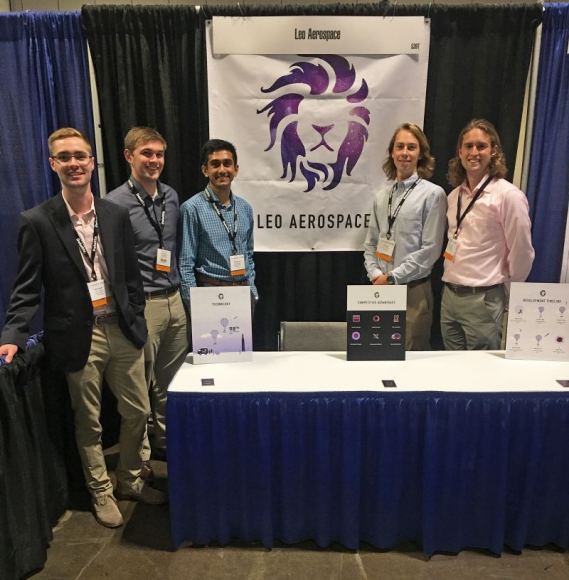
Currently, Leo Aerospace is in the development and funding phase. They’ve obtained some funding from the National Science Foundation, and from a venture capital firm. They have about half of the $250,000 they need. They plan to conduct their first sub-orbital flight in 2020, and to launch their first micro-satellite into orbit in 2022. They intend to use existing approved launch sites.
Leo Aerospace was founded by five then-students at Purdue University. Leo started as a club, but the former students have turned it into a business. And that business seems to have a bright future. They conducted a customer discovery and market validation study and found a large demand for a better way to launch micro-satellites.
“We want to be part of the space market,” Murali said. “People are interested in space and creating technologies that not only can operate in space but also help people back on Earth. What we’re trying to do is help them get there.”
But they still need a better name than “rockoons.”
Balloon launcher Zero2Infinity Sets Its Sights to the Stars
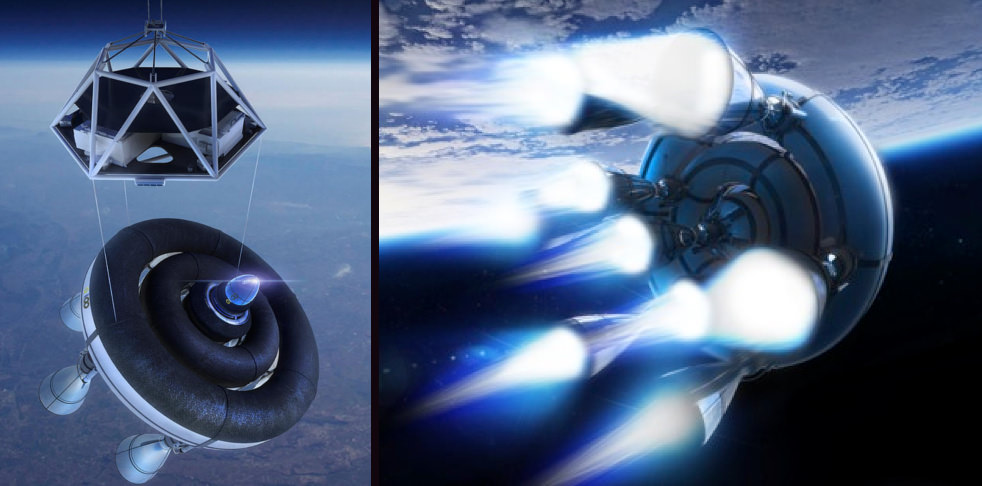
Clearly, the sky is not the limit for balloon launcher Zero2Infinity. Based in Barcelona, Spain, the company announced this week their plans to launch payloads to orbit using a balloon launch system. The Rockoon is a portmanteau, as Lewis Carroll would have said: the blend of the words rocket and balloon.
The launch system announced by the company is called Bloostar. The Rockoon system begins with a balloon launch to stratospheric altitudes followed by the igniting of a 3 stage rocket to achieve orbit. The Rockoon concept is not new. Dr. James Van Allen with support from the US Navy developed and launched the first Rockoons in 1949. Those were just sounding rockets, Bloostar will take payloads to low-earth orbit and potentially beyond.
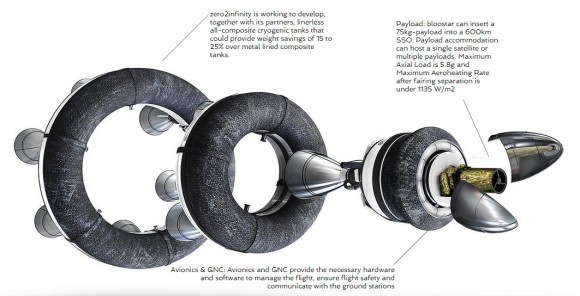
The advantage of rocket launch from a balloon is that it takes the Earth’s atmosphere out as a factor in design and as a impediment to reaching orbit. The first phase of the Bloostar system takes out 99% of the Earth’s atmosphere by reaching an altitude of over 20 km (>65,000 feet). Aerodynamics is not a factor so the stages are built out rather than up. The stages of the Bloostar design are a set of concentric rings which are sequentially expended as it ascends to orbit.
Zero2Infinity is developing a liquid fuel engine that they emphasize is environmentally friendly. The first stage firing of Bloostar will last 160 seconds, reach 250 km of altitude and an inertial speed of 3.7 km/s. This is about half the velocity necessary for reach a stable low earth orbit. The second stage will fire for 230 seconds and achieve an altitude of 530 km with velocity of 5.4 km/s. The 3rd and final stage motor will fire at least twice with a coast period to achieve the final orbit. Zero2Infinity states that their Bloostar system will be capable of placing a 75kg (165 lbs) payload into a 600 km (372 mi) sun-synchronous orbit. In contrast, the International Space Station orbits at 420 km (260 mi) altitude.
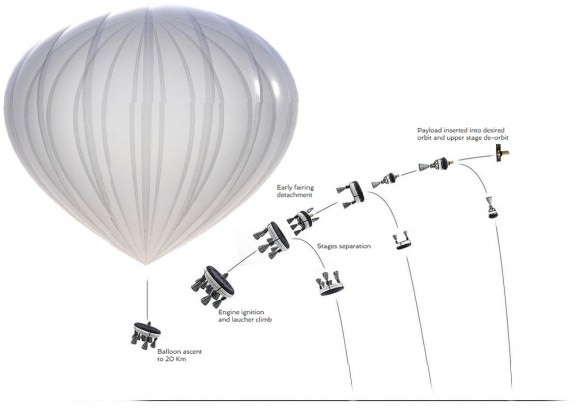
For the developing cubesat space industry, a 75 kg payload to orbit is huge. A single cubesat 10x10x10 cm (1U) will typically weigh about 1 kg so Bloostar would be capable of launching literally a constellation of cubesats or in the other extreme, a single micro-satellite with potentially its own propulsion system to go beyond low-earth orbit.
The Rockoon concept is not unlike what Scaled Composites undertakes with a plane and rocket. Their Whiteknight planes lift the SpaceShips to 50,000 feet for takeoff whereas the Zero2Infinity balloon will loft Bloostar to 65,000 feet or higher. The increased altitude of the balloon launch reduces the atmospheric density to half of what it is at 50,000 feet and altogether about 8% of the density at sea level.
The act of building and launching a stratospheric balloon to 30 km (100,000 feet) altitude with >100 kg instrument payloads is a considerable accomplishment. This is just not the releasing of a balloon but involves plenty of logistics and telecommunications with instrumentation and also the returning of payloads safely to Earth. This is clearly half of what is necessary to reach orbit.
Bloostar is blazing new ground in Spain. The ground tests of their liquid fuel rocket engine are the first of its kinds in the country. Zero2Infinity began launching balloons in 2009. The founder and CEO, Jose Mariano Lopez-Urdiales is an aeronautical engineer educated in Spain with R&D experience involving ESA, MIT and Boeing. He has speerheaded organizations and activities in his native Spain. In 2002 he presented to the World Space Congress in Houston, the paper “The Role of Balloons in the Future Development of Space Tourism”.
References:

